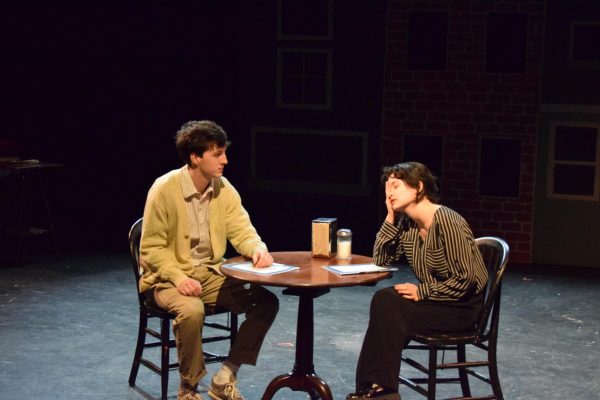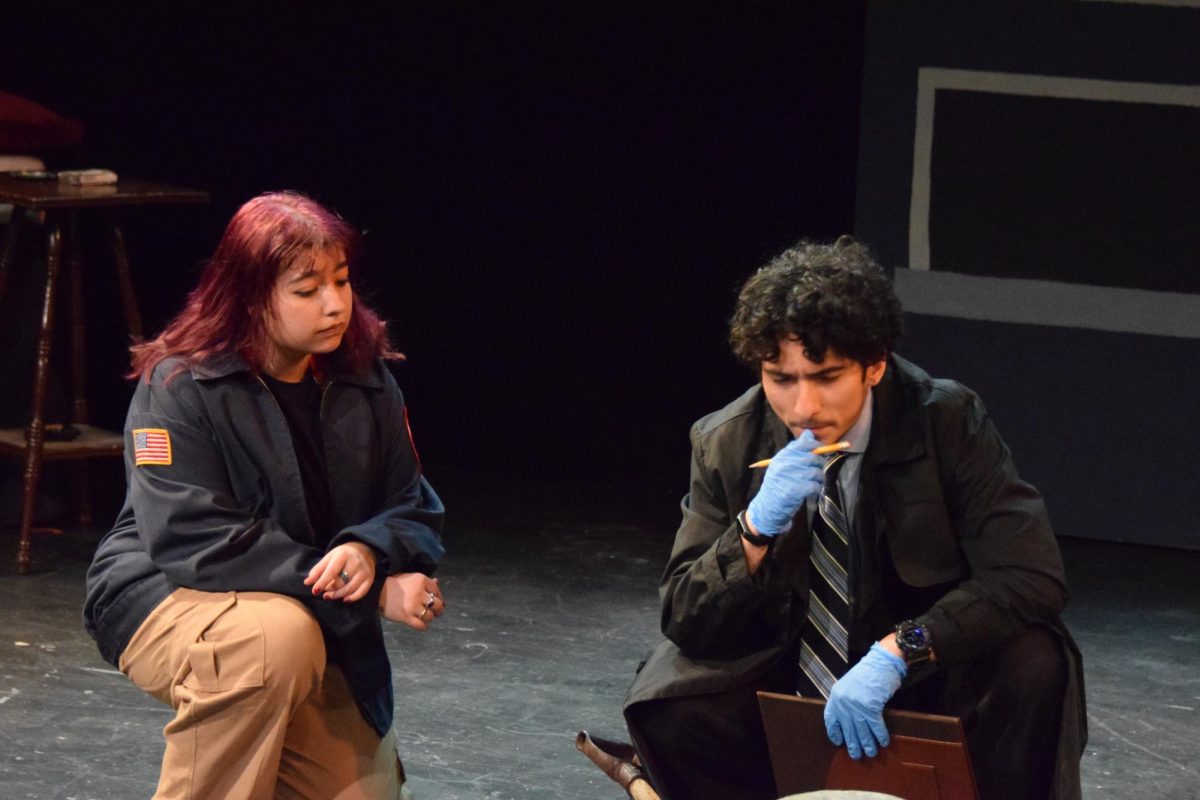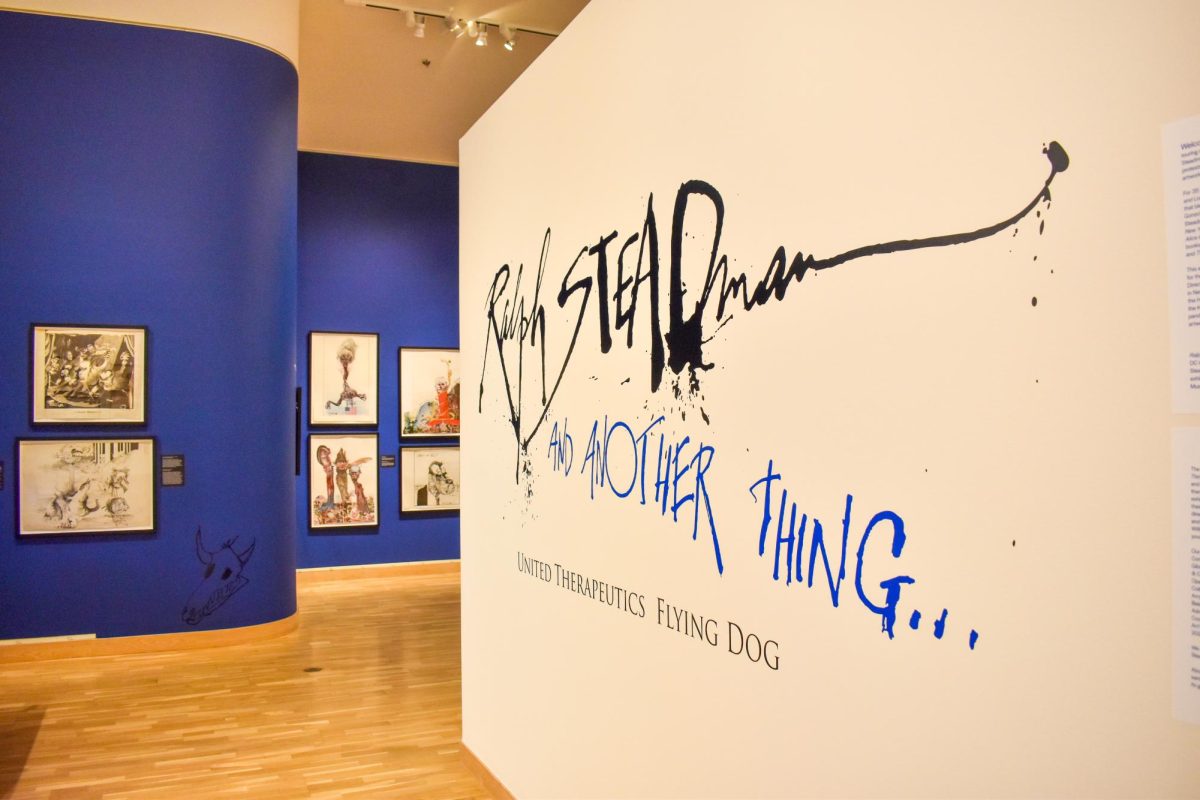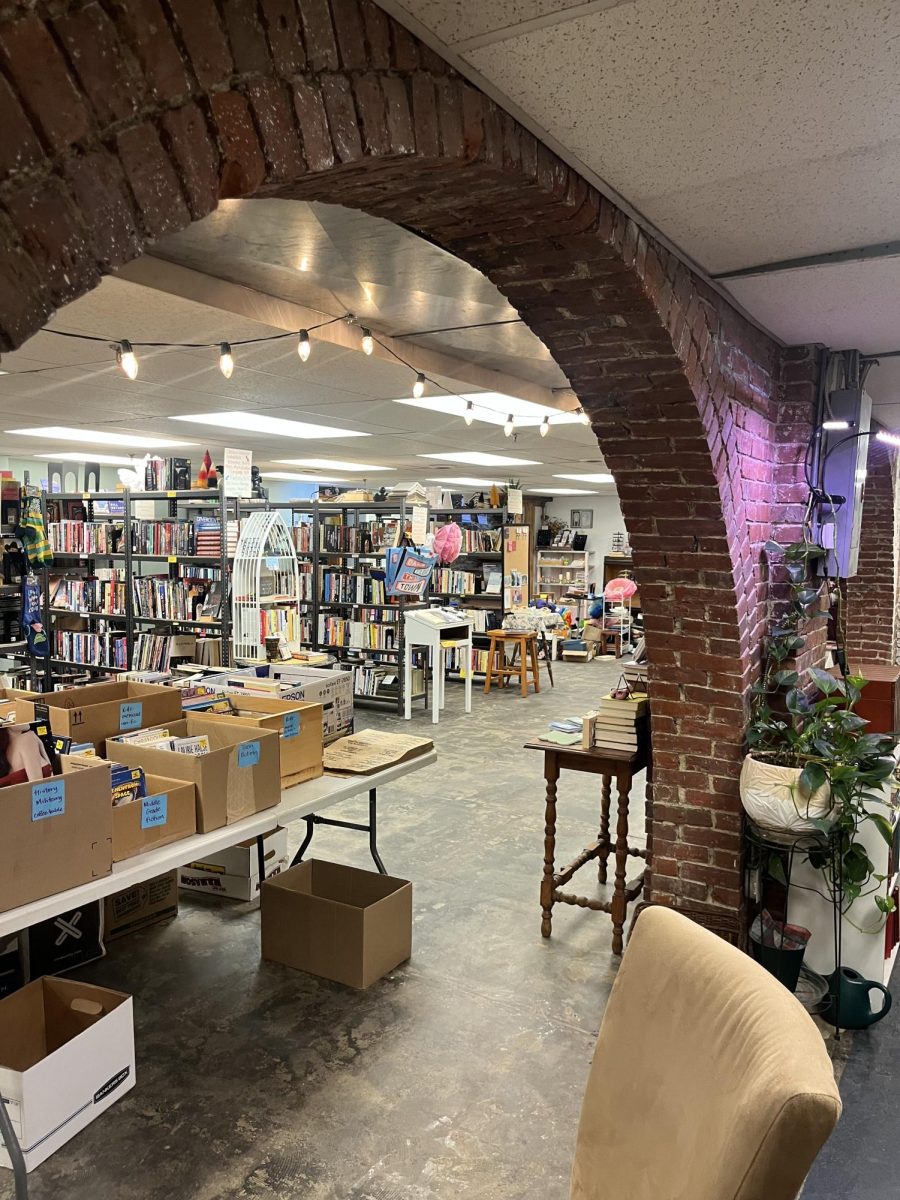When the Robinson Players’ “Incendiary” opens later this week, audiences will see ten of their peers take the stage to act out a story about love, deceit, trauma and, above all else, arson. But the vast majority of student names in the playbill will be in technical roles: the production team of designers guiding the overall vision, the light and sound operators controlling effects from the booth, the build crew who built the versatile set and the run crew responsible for making sure everything goes smoothly each night.
These many crew members have responsibilities to the play, and they also have responsibilities to each other. Nicole Rossilli ’27, one of the production’s two co-directors, says the most important part of her job “is making sure our actors feel heard and safe. We strive to create an environment in which everyone is comfortable and connected. As much as rehearsals are serious and a time of focus, they also need to be fun.”
At the same time, a show still needs to be staged. Rossilli and her co-director Connor Gerraughty ’26 are in charge of “casting, blocking and overall vision,” Gerraughty said, while managing and coordinating a huge team of students who specialize in different aspects of the show.
“Incendiary” is not an easy play to stage. The play follows Elise — cheerfully described by the script as “The Youngest Ever NYC Fire Chief!” — who is secretly a pyromaniac and falls in love with the detective investigating the rash of fires that she’s set. It involves lots of coordination, frequent scenery changes and above all complicated technical effects to make the show’s arson believable.
Over the last few months, the show’s technical teams have been hard at work imagining, designing and building the show, and above all answering the central and most challenging question of producing a play called “Incendiary”: how do you set a stage on fire?
***
“As one would expect, we are not allowed to actually put fire on stage,” says Rossilli. But a key moment of the show involves an entire building set ablaze. What is to be done?
“The sequences that involve fire have taken a lot of coordination between props, lights, sound and staging to provide a dynamic representation of the intensity of real fire,” said Lila Hutchins ’28, the production’s property director. Every one of the show’s designers has in some way grappled with the problem of staging fire, even those not always associated with special effects.
Take the scenery, for instance. Anna Cole ’25, the production’s set designer, focused on making the fire feel intense by juxtaposing it against the rest of the stage. “The burning building is red, while calmer spaces are blue for contrast,” she said.

Cole also worked to prepare the audience for the climax by foreshadowing the fire with subtle imagery throughout her sets. “There are fire and water motifs hidden all over the place — some visible to the audience and some not!” she said. “There are also several little fires hidden in places like the bricks and windowsill details.”
For the blaze itself, Sierra Stark ’25 stepped into a leading role. As the production’s lighting designer, her job was to “come up with the color concepts and a lighting atmosphere that fits the themes of the show,” she said. For “Incendiary,” Stark employed a range of strategies ranging from “creating a general fiery glow to give ambience, to using lighting techniques and fog to create live fire effects.”
That fog machine “may seem like a simple piece, but [it] took a lot of doing to make happen,” said Georgia Green ’28, the stage manager. “Thanks to our production manager, Julia [Parham ’25], we are able to use it in the show and that just adds another layer of flare.”
Then there’s the challenge of staging what it looks like to respond to a fire. Key among these: an actual fire hose, which was “sourced by our amazing props manager Lila Hutchins, who managed to get a real fire hose from one of our local fire departments, which is super cool,” said Gerraughty.
And when it’s all over? “There are a couple scenes in the show where the characters are examining the aftermath of a fire,” said Stark. “I am especially attached to the lighting looks for these scenes because I think the way the scattered fiery orange hues interact with the night-like dark blue environment is really beautiful.”
The production will run for three performances — Feb. 8 at 5 p.m., Feb. 9 at 2 p.m. and Feb. 10 at 7:30 p.m. — in Gannett Theater in the basement of Pettingrew Hall. Each night, the stage will light up with heat, smoke and flames that have surpassed even the directors’ wildest dreams.
“I really have to thank our amazing production team for this,” said Rossilli. “We just told them our ideas for this and they made it come to life.”









